Jonas Wendelin is the Artist Behind Dittrich & Schlechtriem’s “Othering”
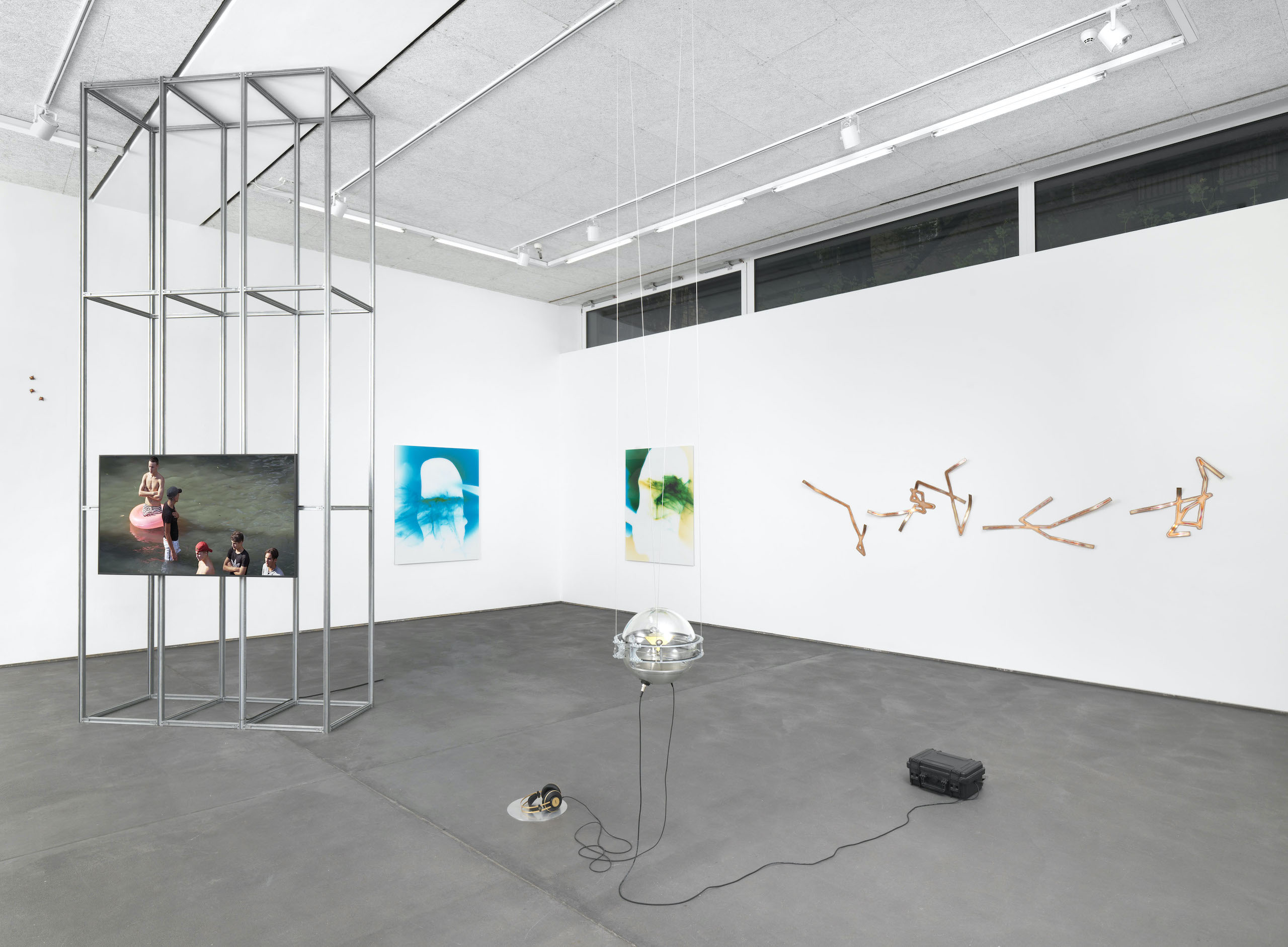

Words: Chris Erik Thomas.
It’s this sentence, written by Nicholas Korody, that forms the glue holding together the new exhibition at Berlin-based gallery Dittrich & Schlechtriem, yet it could also apply to Jonas Wendelin. Under his careful curation, the Düsseldorf-born artist pieced together the gallery’s new group show, aptly titled “Othering”, which features works by Yalda Afsah, Julian Charrière, Albrecht Dürer, Francisco de Goya, Andreas Greiner, Jenna Sutela, Analisa Teachworth, Jol Thoms, Sung Tieu, and Wendelin himself.
Focused around the exploration of “how certain lives — human and nonhuman — are designated as alien”, a version of the group show first debuted in the industrial halls of Areal Böhler for Art Düsseldorf, before making its way back to Berlin for its Gallery Weekend debut. Now staged at Dittrich & Schlechtriem with some new works, the exhibition is a full sensory experience filled with art that spans media. Situated at the entrance, a massive 206 x 206 cm video screen adorned to a stripped-down wooden frame displays serene, shifting landscapes digitally created by an artificial intelligence algorithm (Andreas Greiner’s “Traum (vom Walde)”). Meanwhile, in one corner on the lower floor, 49 screens stacked high display found underwater footage (Julian Charrière’s “The Gods Must Be Crazy”), while two otherworldly ceramic sculptures glow with faint light like a strange new species dredged up from deep under the ocean waves (Wendelin’s “Involution I and II”).
It’s a sprawling exhibition that signals an enticing and more experimental direction for the gallery that was founded by Lars Dittrich and André Schlechtriem in 2011. It also showcases Wendelin’s strength as a curator — a result of years spent running community-focused art spaces, including NAVEL in Los Angeles and FRAGILE in Berlin. For Wendelin, the same ethos from “Othering” applies: “Without the other, there is no self.” His practice is intrinsically tied to the world, and people, around him.
As Wendelin spent some time in Berlin to oversee exhibitions at both FRAGILE and Dittrich & Schlechtriem, we caught up with the artist to discuss the importance of collaboration, the stark differences between the US and German art scenes, and the pre-internet and pre-Chernobyl food and drinks that formed the basis for his first-ever curated show.
“Othering” is on view from 29 April through 25 June 2022. The gallery is located on Linienstrasse 23, 10178 Berlin. The opening hours are Monday through Saturday, from 11 AM to 6 PM.
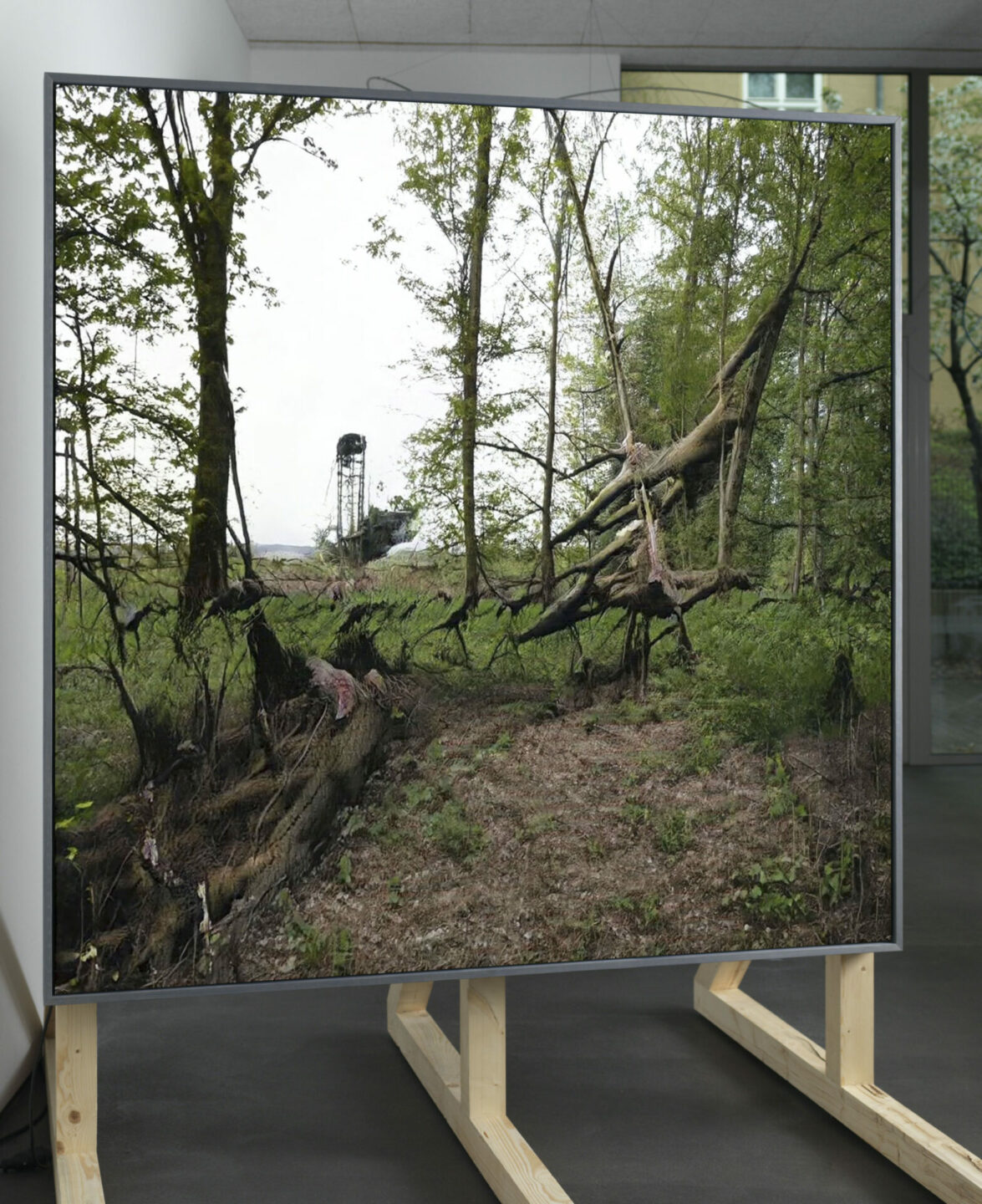
Installation View of Andreas Greiner’s “Traum (vom Walde)” at Dittrich & Schlechtriem, 2022. Photos: Jens Ziehe. Courtesy Dittrich & Schlechtriem.
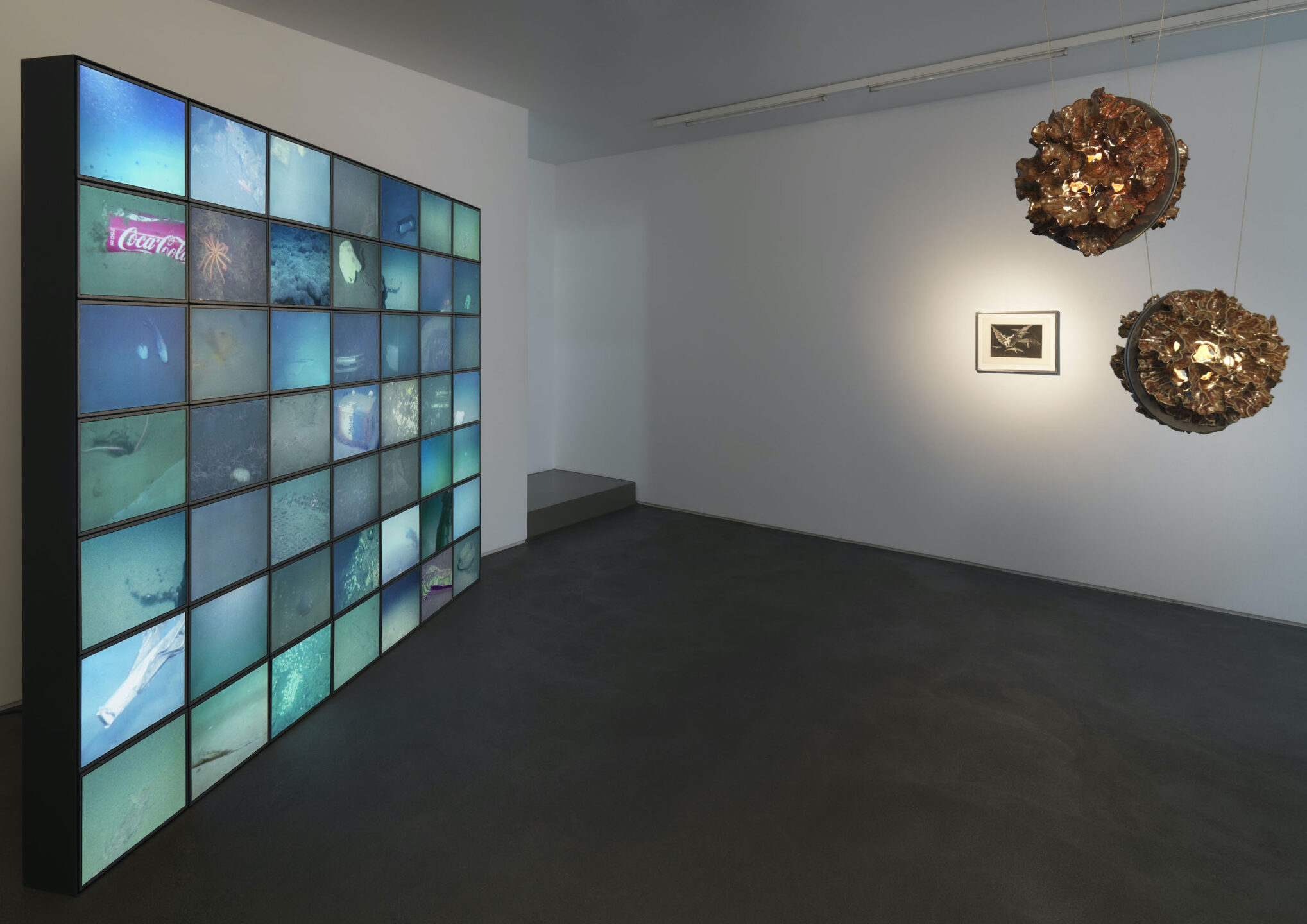
Installation View of Julian Charrière’s “The Gods Must Be Crazy” and Jonas Wendelin’s “Involution 1 and II” in "Othering" at Dittrich & Schlechtriem, 2022. Photos: Jens Ziehe. Courtesy Dittrich & Schlechtriem.
You grew up in Dusseldorf. How was your interaction with art?
My dad is an artist and architect, so it’s in the family. There’s a lot of resources for the arts in the Rheinland. It’s just inevitable really to be around it, but it was important for me to leave.
Did you want to do anything other than art growing up?
I started doing photography for a little while. Photography is nice because it shows you what you’re interested in. The medium itself wasn’t so much interesting to me anymore, so I just got away from it. For a while, I did some set design and I thought architecture was a thing for me, but eventually it became pretty clear that I really wanted to study art. I actually applied for the Kunstakademie Düsseldorf but they didn’t take me.
You just curated the new group exhibition for Dittrich & Schlechtriem. How did you get involved with the gallery?
When we got hold of a studio on Leipziger Straße, I pretty quickly started to curate little shows and we established a residency program in which we invited different artists. But the very first resident was an animal; it was the most language-sophisticated bird on the planet. We tried to teach it. Eventually, we took in a refugee from Somalia and he stayed with us for a little while, but it was always this idea of including people in the practice. Then I studied for a little bit in California and started a nonprofit there called NAVEL, which is still running. I’m not so involved anymore but this practice of inclusion continued. Eventually, FRAGILE [in Berlin] became a thing.
The gallerist, André [Schlechtriem], didn’t really know much of what I was doing but I was on the radar because I was pretty present in Berlin for the programming we were doing. He just came to one of the openings and said, “Jonas I have no idea what you’re going to do, but I’m kind of intrigued. Do you want to do a show for Gallery Weekend?” And I was like, “Yeah, sure. Let’s give it a try.” And then we just started working together. André really wants to open up the format of the gallery a bit and experiment a little bit more. It’s also partially to give me the space to make clear that this collaborative sphere is part of my practice. Being an artist, it’s not like you’re just making work. It’s a practice. It’s life.
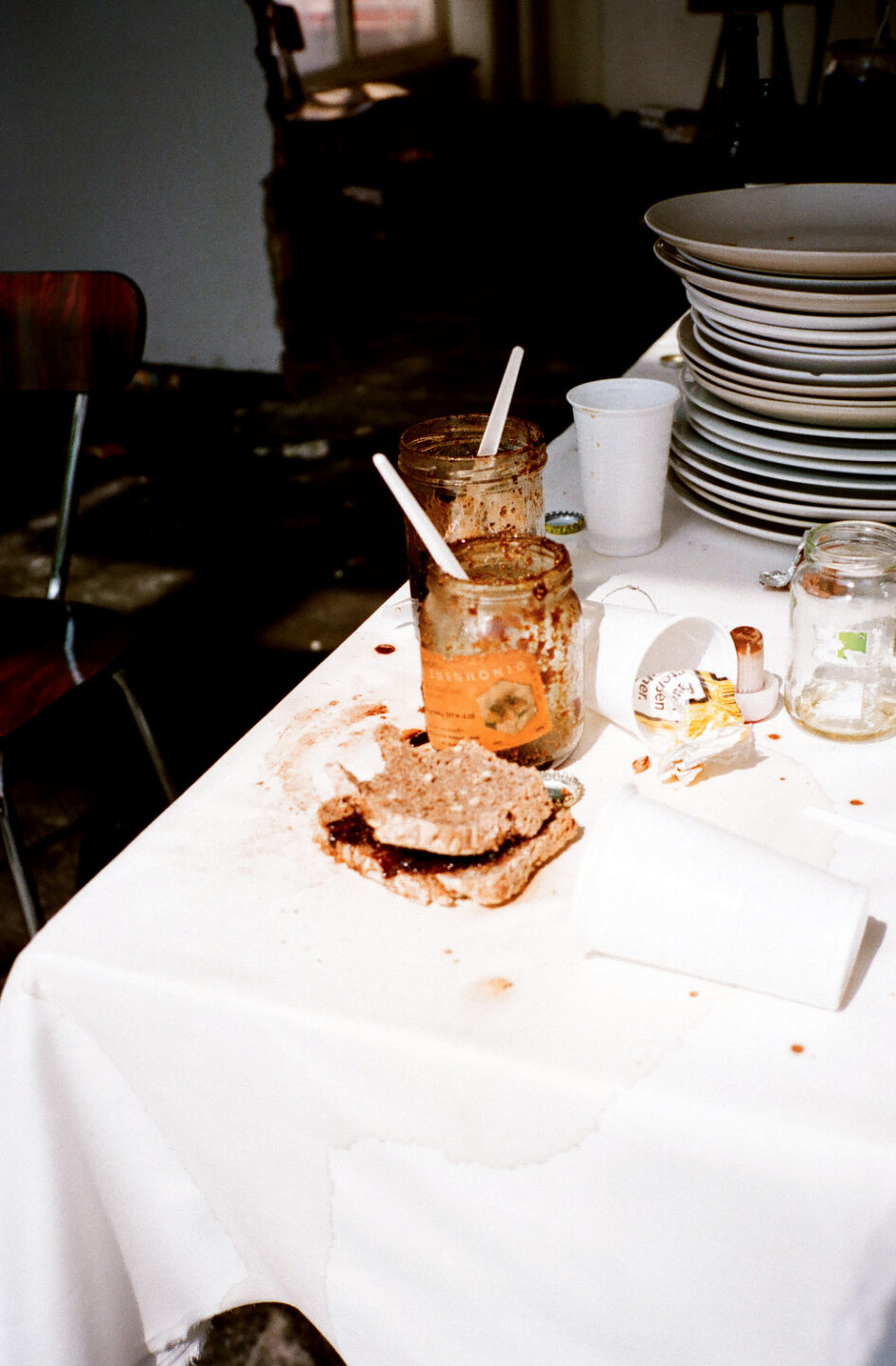
"Pre…", 2014. Jonas Wendelin in collaboration with John Friedrich Adamski. Performance.
Material: Food and drinks dated pre-1980.
Being an artist, it’s not like you’re just making work. It’s a practice. It’s life.
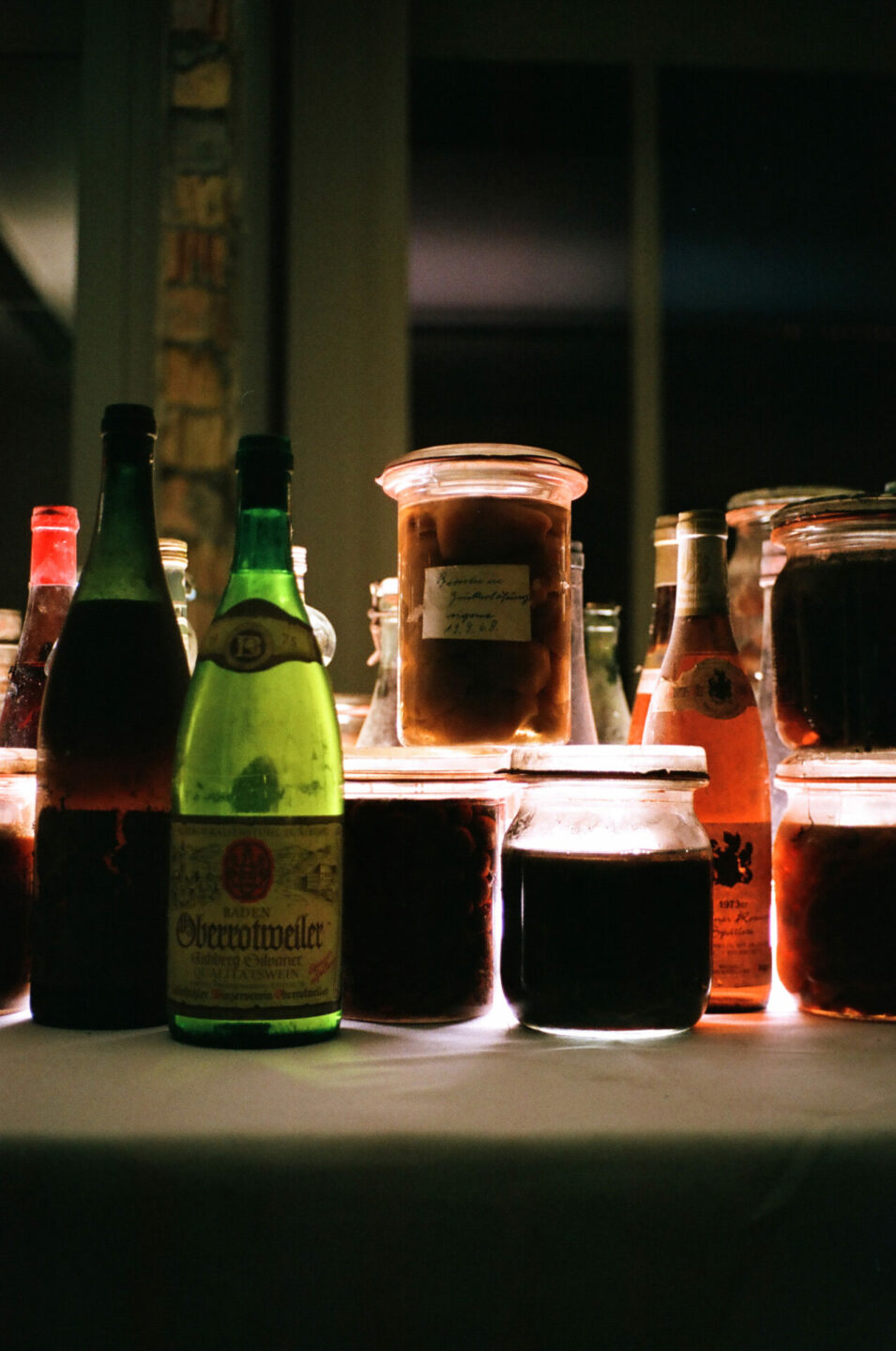
"Pre…", 2014. Jonas Wendelin in collaboration with John Friedrich Adamski. Performance.
Material: Food and drinks dated pre-1980.
Do you remember the first show that you curated?
Before it was FRAGILE, we just had our studio and there was a show where I made a big dinner. It was a huge spread, like a buffet, but the food was all preservatives. It was honey from the DDR, Coca-Cola from 1970, wine and drinks from a long time ago, and bread from a sourdough culture from the 1980s. All the food on the table was dated pre-internet and pre- Chernobyl, and pre every single person at the opening. The whole show was called “Pre”. It was a spread of ancient food and all around there were artworks which projected the future. It became very dystopic. That was the first successful attempt to really do something and it was really chaotic. There were performances and all the studios were open. It just ended up being a huge party in the end, which was very fun.
How did you find all that food?
I had a conversation with a really old friend of mine, and he told me about going to his grandma’s house every Sunday. She would make food, but some of the food his grandma’s mom had preserved. He was eating it every Sunday. I was like, “Oh, this is a really interesting idea.” So we started digging and then even in my family, we found old basements with stuff. You go into the internet and there’s a post-war generation with a different idea of scarcity and resource. There’s a deep rooted fear. In the beginning, you talk to all these people and you’re like, “Oh yeah, we’re going to come pick up some stuff.” They’re like, “Yeah, please take everything.” And then the moment you’re in their basement clearing out, they’re like, “No, no, no, you can’t have that.” They’re anxious. It was a really interesting experience but this is how we survived for a long time. How do we preserve our resources in order to prolong our chances of survival?
What themes or concepts do you like to explore in your art?
For the last couple years, I’ve been doing a lot of ceramics. Ceramics is one of the most ancient technologies. Prometheus gave us fire and then we started making little bowls, right? And then eating together is very ceremonial. In the beginning, the works were very performative. I would make these performances with the ceramics included. They became a little bit more like objects but they are still somewhat like vessels. I would say a vessel is a theme I go back to. You could call anything a vessel but, in the end, it’s something which holds information and you can pass it along.
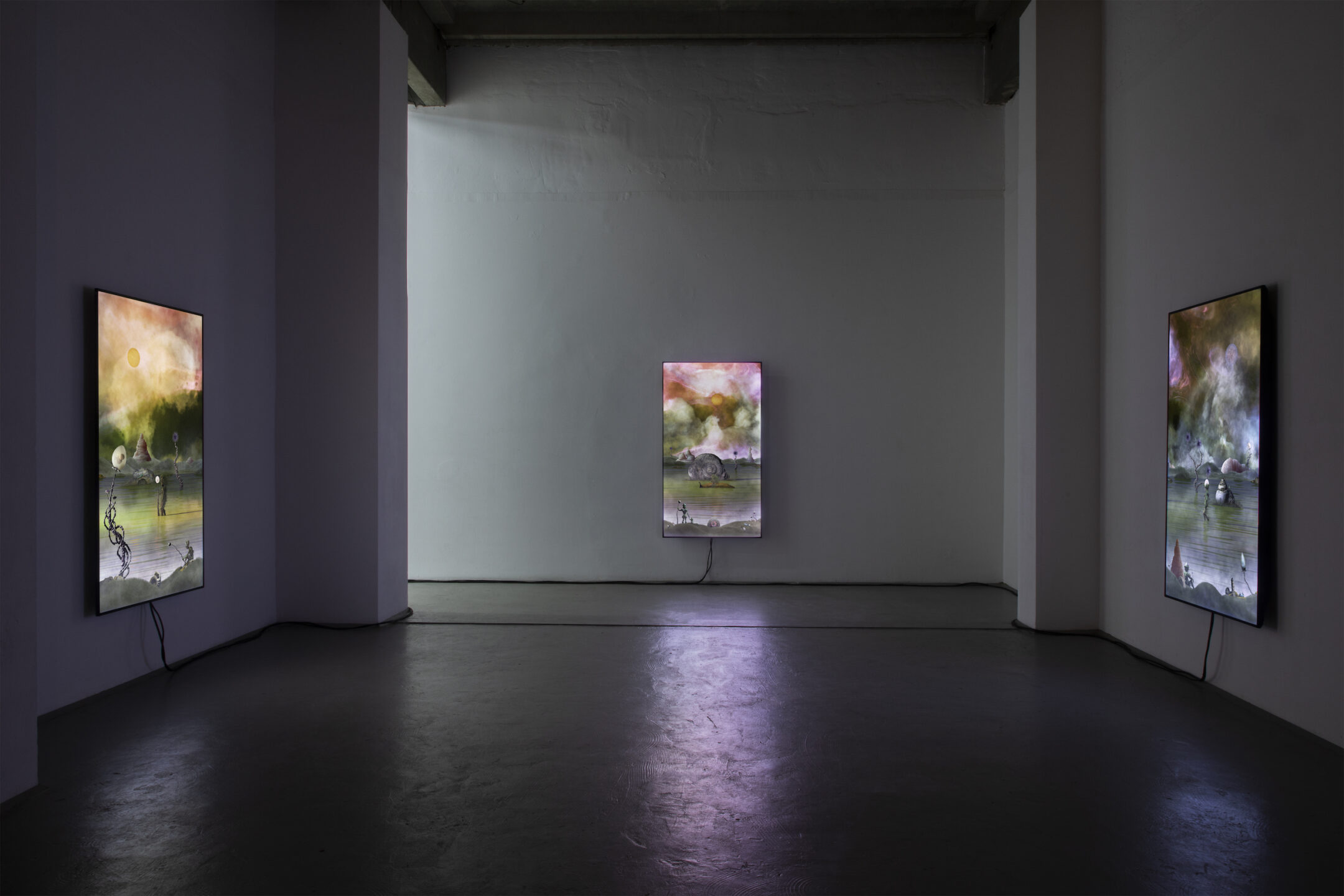
Hans-Henning Korb. "Prolog der Pflanzlichen Wesen", 2022. Video triptych, 3 channel UHDV video, loop, 12 min. 3 x 75” Screens. Photo: Jonas Wendelin. Courtesy FRAGILE.
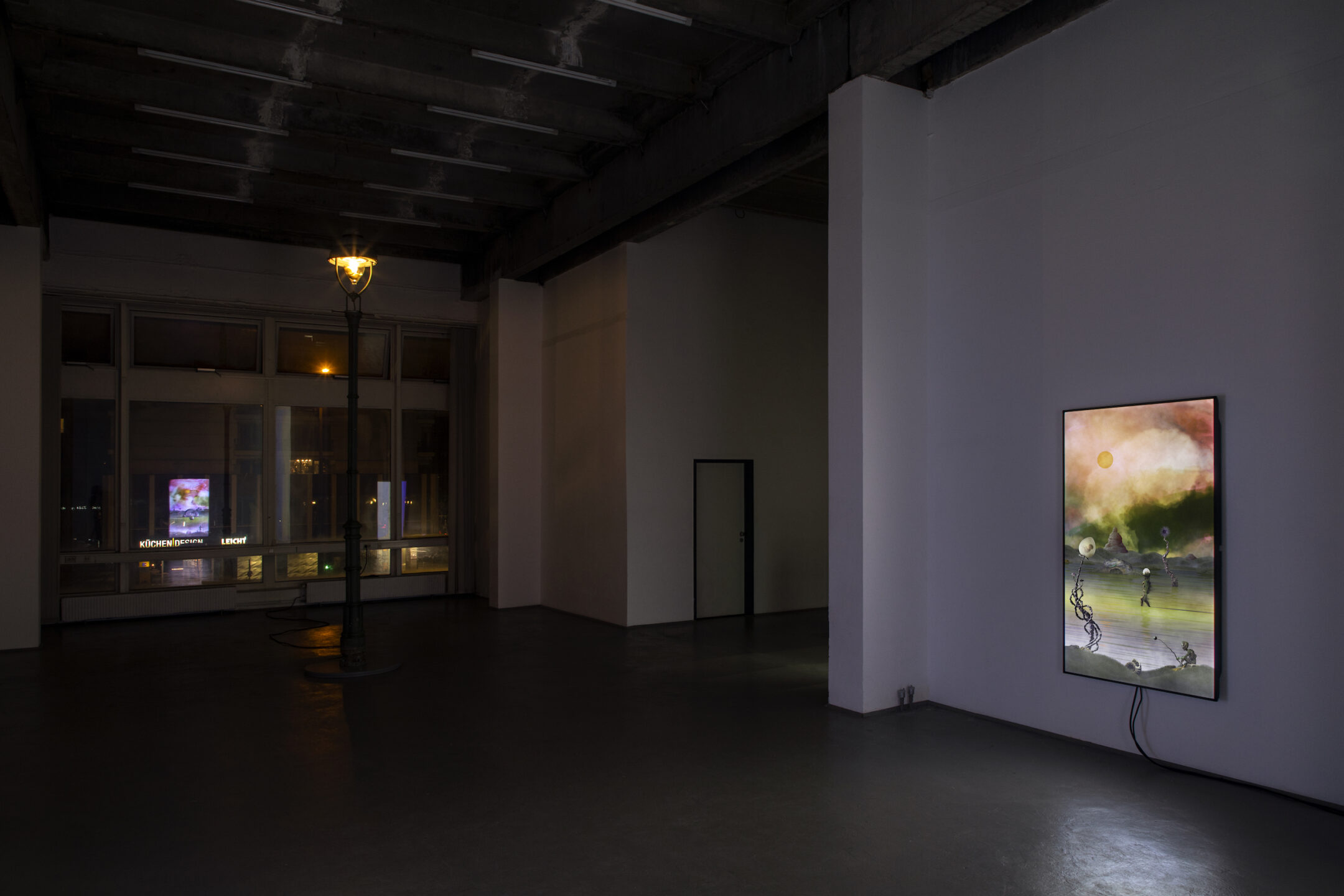
Hans-Henning Korb. "Prolog der Pflanzlichen Wesen", 2022. Video triptych, 3 channel UHDV video, loop, 12 min. 3 x 75” Screens. Photo: Jonas Wendelin. Courtesy FRAGILE.
With your nonprofit spaces, you started NAVEL in LA first and then FRAGILE in Berlin?
It was kind of at the same time. The studio in Berlin already existed, which is where we would do all these experimental things. The plan was always to enhance this idea. Then I studied in California for a little bit at the California Institute of Arts in Santa Clarita, just outside of Los Angeles. I met these two other people and we realized we’d known each other for a little while. They had just gotten this empty warehouse space in downtown LA and we basically slept on the floor for a year and didn’t have a shower. We would go to the Standard Hotel and jump in the pool.
We renovated the whole space and then slowly started to include the community and put other people in charge, and then slowly faded out. The idea was that we really just do the basis for it, and then see what happens by itself if people get the opportunity to do something. I think it actually became quite a successful thing in LA, which is very different than FRAGILE. My partners, Maurin Dietrich and Cathrin Mayer, are more like traditional curators in that sense.
I was looking at the website for the space in LA and it looks really nice.
There’s an educational program. People can take classes and the classes are self-run by people offering their knowledge. America is a very different economic situation. There’s very little funding for the arts. Everything is going through private hands and education is very expensive, so offering a place where knowledge is accessible is very important. For us, it was really important that if we invite somebody, we actually pay the people. If everything is based on this free intern economy, where whoever has the time to do something can do it, it’s very exclusive.
What are some of the biggest differences in working out of LA versus working in Germany?
Maybe it’s too cheesy to say, but we are in a very privileged place being able to travel between the two. We have the time to do certain things. We have the means.
I was talking to someone about New York versus Berlin, and they were asking what the biggest difference is.
It’s time.
Yeah. Having the time to not worry about making rent, and being able to have resources to make art.
Right. It creates a whole different culture because you’re not in competition. You can actually work on something together.
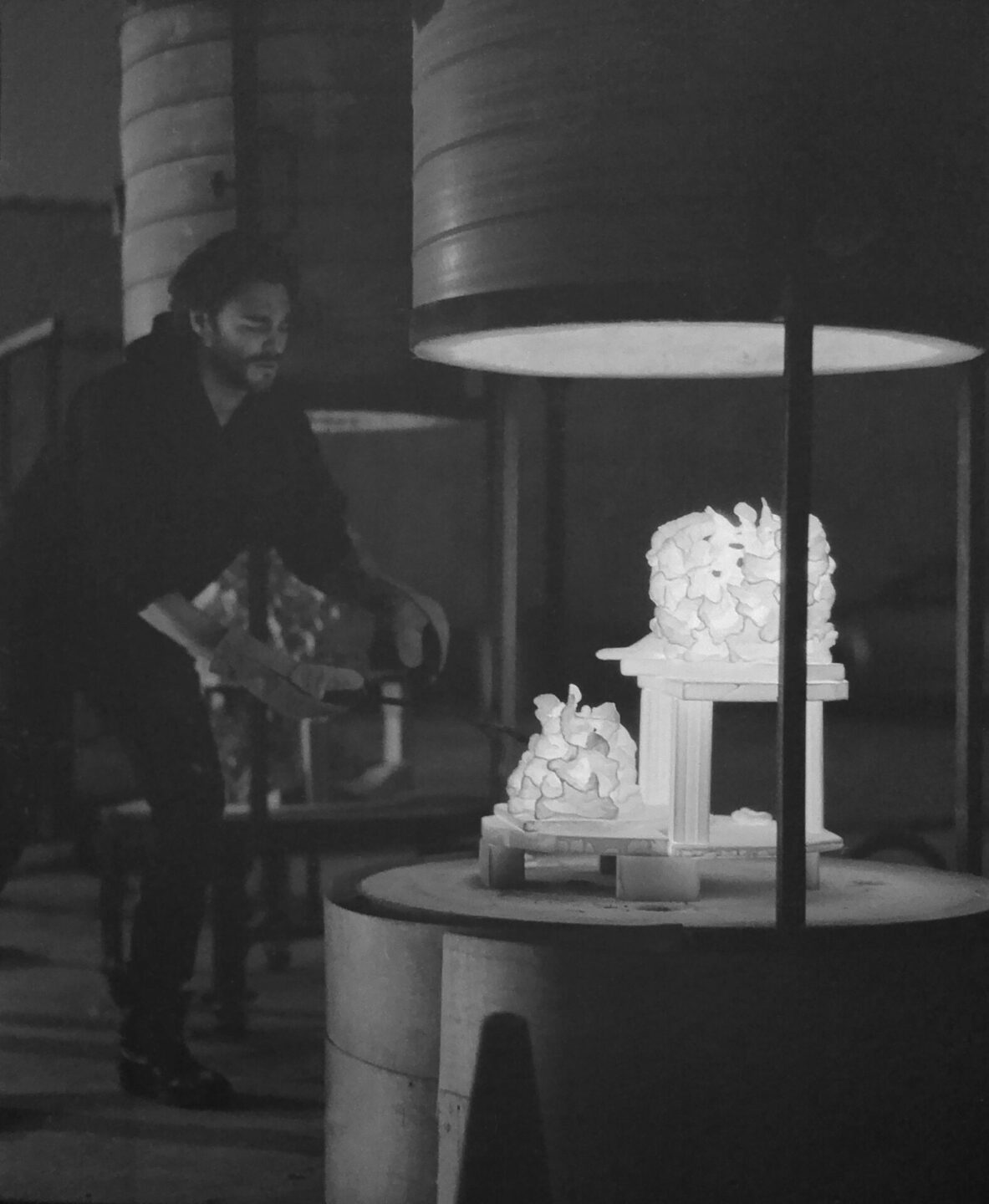
Photo courtesy Jonas Wendelin.
America is a very different economic situation. There’s very little funding for the arts.
Now that you’re mainly based out of LA, do you prefer the working environment in LA or Berlin? Or do you go back and forth?
I couldn’t do one without the other. If I stay too long in America, it also fucks with your head. It’s good to have a foot in the door in Berlin – being engaged in the community here with a project like FRAGILE. At the same time, in LA, you’re mostly by yourself. I work with the American Museum for Ceramic Art, and I have all my facilities. I produce most of my work there. Some of the techniques I’m doing, I wouldn’t even be able to do here. The ceramic culture, for example, is very advanced in LA and I’m learning a lot. The technicians I work with assist me in a way, but they’re also a teacher figure for me at the same time.
You can just endlessly learn. You work the elements. There’s very little control you can infuse into the whole process. These are things that got a little lost in Germany or Europe in general. Within cities, you’re not even allowed to use fire in the gas kilns. When I’m there, I really have the time to concentrate. With the nonprofit, I’m in more of an advisory role at this point, and I have another studio at the museum. I jump between the three. I can really focus more on me and my work.
It seems that the common trend in your work and what you do is making things community-oriented, and giving opportunities to people who don’t have those opportunities generally.
It doesn’t feel so different to me from working on a show with an artist together and seeing the world out of their head – really engaging into their work and producing it with them together, rather than doing it for myself. With the practice of exhibition-making, for example, or performance, these boundaries we have set and the name attached to something is not so important.
It’s about creating a connection.
And being aware of the audience coming in. They are as much a part of it as the person doing it. It’s funny, in the text we just wrote about the show at Dittrich & Schlechtriem, which is called Othering, we talk about this. “Without the other, there is no self.” The view looking at something is already incorporated in the process of making anything.
Chris Erik Thomas is the Digital Editor of Art Düsseldorf. They work as a freelance writer and editor in Berlin and focus primarily on culture, art, and media. Their work can also be seen in Highsnobiety, The Face Magazine, and other publications.